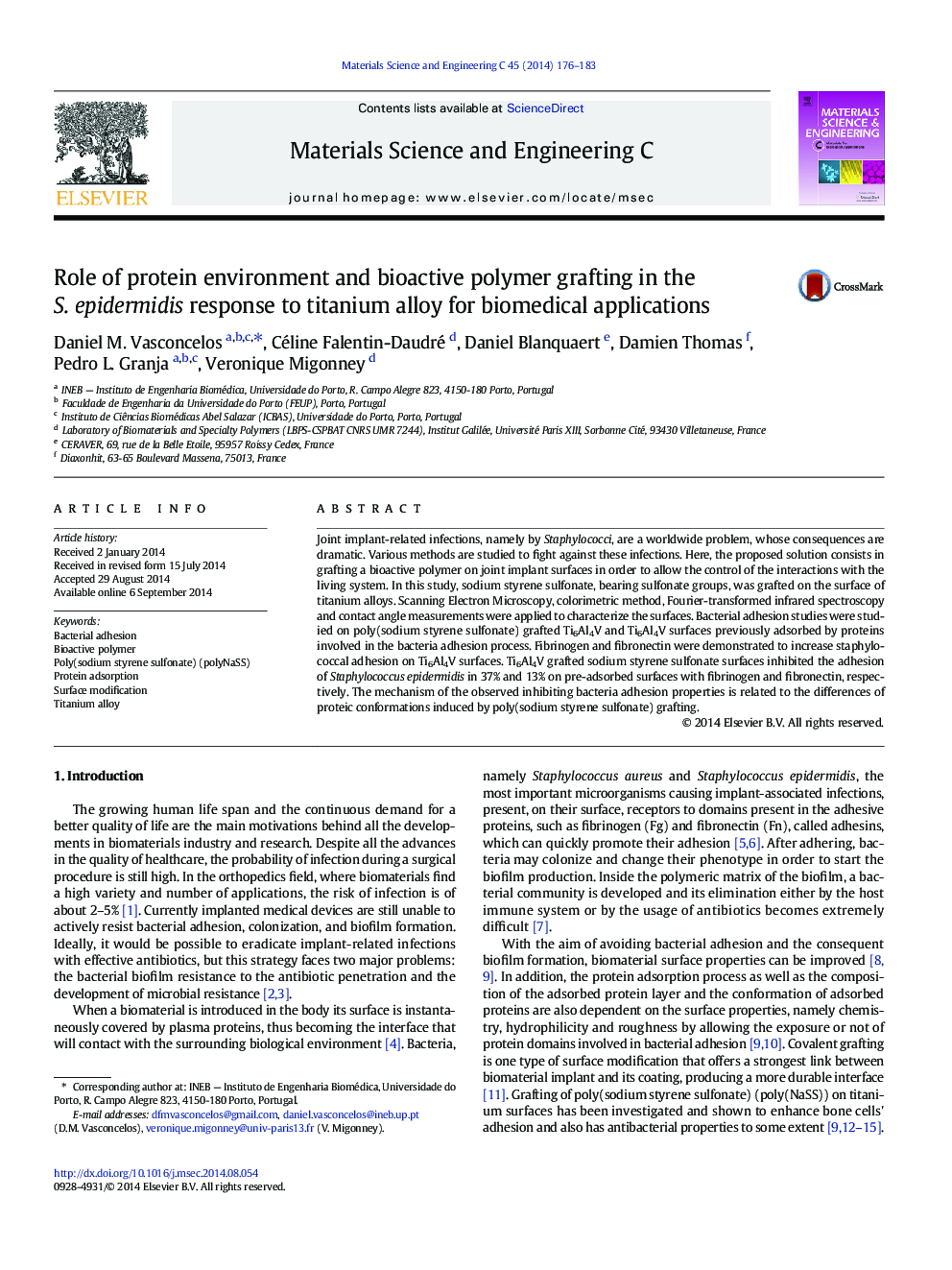| Article ID | Journal | Published Year | Pages | File Type |
|---|---|---|---|---|
| 1428546 | Materials Science and Engineering: C | 2014 | 8 Pages |
•Bacterial adhesion depends on the proteins adsorbed to the surface.•PolyNaSS was found to inhibit adhesion of S. epidermidis.•Roughness and the wettability contribute to the bioselectivity of the biomaterial.
Joint implant-related infections, namely by Staphylococci, are a worldwide problem, whose consequences are dramatic. Various methods are studied to fight against these infections. Here, the proposed solution consists in grafting a bioactive polymer on joint implant surfaces in order to allow the control of the interactions with the living system. In this study, sodium styrene sulfonate, bearing sulfonate groups, was grafted on the surface of titanium alloys. Scanning Electron Microscopy, colorimetric method, Fourier-transformed infrared spectroscopy and contact angle measurements were applied to characterize the surfaces. Bacterial adhesion studies were studied on poly(sodium styrene sulfonate) grafted Ti6Al4V and Ti6Al4V surfaces previously adsorbed by proteins involved in the bacteria adhesion process. Fibrinogen and fibronectin were demonstrated to increase staphylococcal adhesion on Ti6Al4V surfaces. Ti6Al4V grafted sodium styrene sulfonate surfaces inhibited the adhesion of Staphylococcus epidermidis in 37% and 13% on pre-adsorbed surfaces with fibrinogen and fibronectin, respectively. The mechanism of the observed inhibiting bacteria adhesion properties is related to the differences of proteic conformations induced by poly(sodium styrene sulfonate) grafting.
Graphical abstractFigure optionsDownload full-size imageDownload as PowerPoint slide
